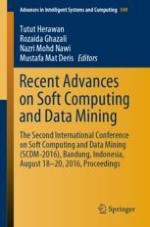This book provides a comprehensive introduction and practical look at the concepts and techniques readers need to get the most out of their data in real-world, large-scale data mining projects. It also guides readers through the data-analytic thinking necessary for extracting useful knowledge and business value from the data.
The book is based on the Soft Computing and Data Mining (SCDM-16) conference, which was held in Bandung, Indonesia on August 18th–20th 2016 to discuss the state of the art in soft computing techniques, and offer participants sufficient knowledge to tackle a wide range of complex systems. The scope of the conference is reflected in the book, which presents a balance of soft computing techniques and data mining approaches. The two constituents are introduced to the reader systematically and brought together using different combinations of applications and practices. It offers engineers, data analysts, practitioners, scientists and managers the insights into the concepts, tools and techniques employed, and as such enables them to better understand the design choice and options of soft computing techniques and data mining approaches that are necessary to thrive in this data-driven ecosystem.
